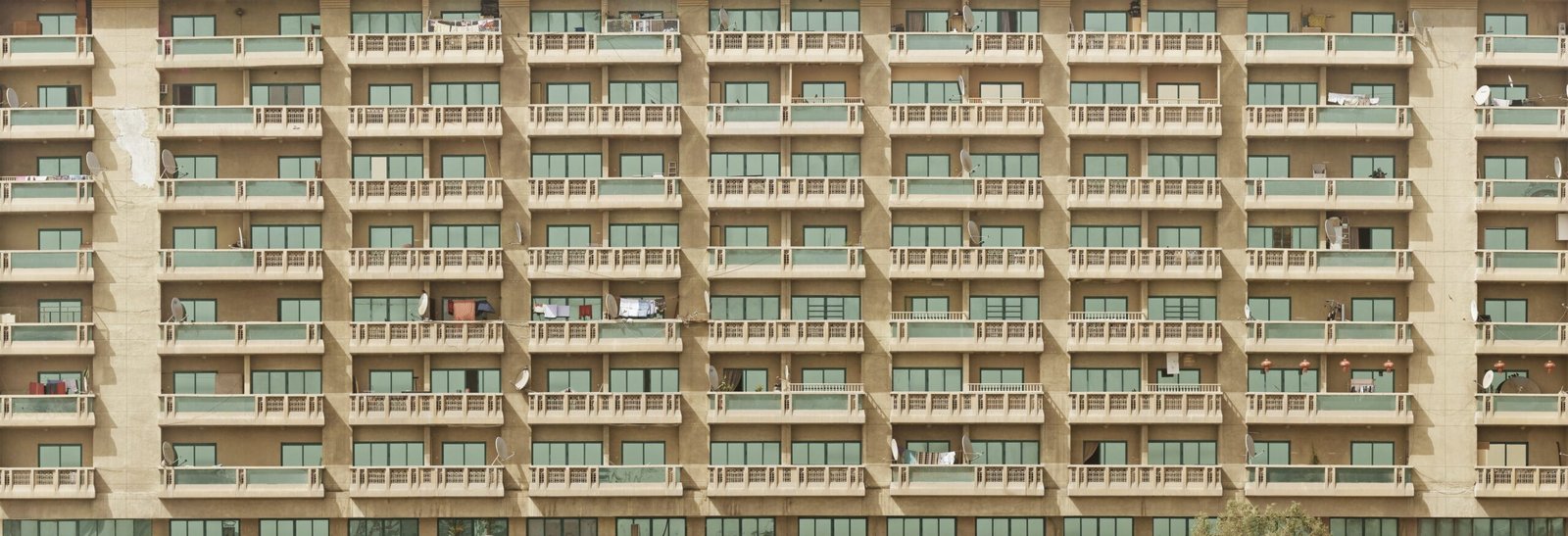Picture this: a place where you can live, work, and connect with like-minded individuals – all under one roof. Co-living spaces, the modern living solution, have been gaining popularity in recent years. These innovative communities offer a unique blend of private living spaces and shared common areas, creating a vibrant and supportive environment. In this article, we will explore the concept of co-living spaces, their benefits, and how they are redefining the way we live. Get ready to step into a world where collaboration and community take center stage, as we delve into the fascinating world of co-living.

Defining Co-Living Spaces
Understanding the concept of co-living
Co-living spaces are a modern living solution that offers individuals the opportunity to live in a shared environment with like-minded individuals. It goes beyond the traditional shared apartments or hostels by creating a sense of community and shared experiences. In a co-living space, you have your own private space, such as a bedroom, but also have access to shared facilities and common areas.
Evolution of co-living spaces
The concept of co-living has evolved over time to meet the changing needs and preferences of individuals. It was first popularized in the 1960s as a response to the counterculture movement, with individuals choosing to live in communes where they could share resources and live a more communal lifestyle. In recent years, co-living spaces have gained popularity due to the rise of urbanization, changing demographics, and a desire for more affordable and flexible living options.
Differences between co-living, shared apartments, and hostels
While co-living spaces may share some similarities with shared apartments and hostels, there are distinct differences that set them apart. Co-living spaces offer a balance between privacy and community, providing individuals with their own private spaces while also encouraging social interaction through shared facilities and activities. Shared apartments, on the other hand, typically involve individuals renting a room in a larger apartment and sharing common areas. Hostels are temporary accommodations that offer shared dormitories for travelers. Co-living spaces provide a more long-term living solution with a focus on community and shared experiences.
Why Co-Living Spaces are gaining popularity
Growing urbanization and population
With increasing urbanization and population growth in many cities around the world, the demand for affordable and accessible housing options has skyrocketed. Co-living spaces provide a viable solution for individuals seeking an affordable and convenient living arrangement in urban areas where housing can be scarce and expensive.
Appeal to millennials and young professionals
Co-living spaces have struck a chord with millennials and young professionals who are seeking a more connected and community-driven lifestyle. These spaces provide an opportunity for individuals to network and build relationships with like-minded individuals, fostering personal and professional growth.
Affordability and shared expenses
One of the major advantages of co-living spaces is the shared expenses. By splitting rent and utilities among multiple individuals, the overall cost of living is significantly reduced. This makes co-living spaces an attractive option for those looking to save money without compromising on quality of living.

Benefits of Co-Living Spaces
Community aspect of co-living
The community aspect of co-living is one of its biggest draws. Living in a co-living space allows you to be a part of a diverse and inclusive community, where you can build meaningful relationships, share experiences, and take part in communal activities. The sense of belonging and support that comes from living in a close-knit community is invaluable.
Convenience and flexibility
Co-living spaces offer convenience and flexibility in terms of amenities and services. Many co-living spaces come fully furnished and equipped with amenities such as laundry facilities, communal kitchens, and shared workspaces. This eliminates the need for individuals to invest in their own furniture and appliances, making it a hassle-free living option. Additionally, the flexible leasing terms and the ability to easily relocate within a network of co-living spaces provide individuals with the freedom to adapt to changing circumstances without the stress of long-term commitments.
Encourages sustainable living
Co-living spaces are often designed with sustainability in mind. With shared resources and communal living areas, co-living promotes a more sustainable lifestyle by reducing individual carbon footprints. Additionally, many co-living spaces incorporate eco-friendly practices such as energy-efficient appliances, recycling programs, and green spaces, fostering a culture of environmental consciousness among residents.
Challenges of Co-Living Spaces
Privacy concerns
While co-living spaces offer a sense of community and social interaction, privacy can sometimes be a concern. Living in close proximity to others means that personal boundaries may need to be established and respected. However, many co-living spaces have addressed this issue by offering private bedrooms or designated quiet areas, providing residents with a balance between socialization and privacy.
Potential for conflicts
Living in a shared environment with other individuals inevitably comes with the possibility of conflicts arising. Differences in lifestyles, personalities, and expectations can sometimes lead to disagreements or misunderstandings. However, co-living spaces often have community managers or house rules in place to mediate conflicts and ensure a harmonious living environment.
Uncertainties in legal framework
As co-living is a relatively new concept, the legal framework surrounding it may not be fully developed in some jurisdictions. This can create uncertainties for both residents and operators of co-living spaces. However, as the popularity of co-living continues to grow, governments and policymakers are starting to recognize the need for clear regulations to protect the rights of both residents and operators, ensuring a safe and secure living arrangement for all parties involved.

Features of Co-Living Spaces
Design and architecture
Co-living spaces are designed to foster a sense of community while also prioritizing individual comfort. The architecture and layout of these spaces are carefully planned to provide residents with private living areas, such as bedrooms or private pods, while also offering shared spaces for socializing and collaboration. The design often incorporates elements that promote interaction and connection, such as communal kitchens, lounges, and outdoor spaces.
Common facilities and shared spaces
Co-living spaces typically offer a range of shared facilities and common spaces that cater to the needs and interests of residents. These may include communal kitchens, dining areas, coworking spaces, fitness centers, and entertainment spaces. The availability of such amenities encourages residents to engage with one another and build a sense of community.
Use of technology in operations
Technology plays a significant role in the operations of co-living spaces, enhancing the overall experience for residents. Many co-living spaces leverage technology to streamline processes such as booking, communication, and maintenance requests. Residents can often access a mobile app or an online platform to connect with their community, book facilities, and stay informed about upcoming events.
Economic Impact of Co-Living Spaces
Effects on property market
The rise of co-living spaces has had a notable impact on the property market. As the demand for co-living increases, developers and investors have started to recognize the potential of this emerging sector. This has led to the conversion or construction of buildings specifically designed for co-living, which in turn contributes to the growth of the construction industry. Additionally, the increased demand for co-living spaces has the potential to drive up property values in certain areas, benefiting property owners.
Job creation and local economy
The establishment and operation of co-living spaces create employment opportunities and contribute to the local economy. The construction and maintenance of these spaces require a workforce, ranging from architects and construction workers to cleaners and community managers. Furthermore, the presence of co-living spaces can attract businesses and services to the surrounding area, stimulating economic growth and creating a vibrant community.
Impact on traditional rental market
Co-living spaces have disrupted the traditional rental market by offering a more affordable and flexible alternative. With the shared expenses and convenient amenities provided by co-living spaces, individuals may be drawn towards this option rather than traditional rental agreements. This can potentially affect the demand and rental prices in the traditional market, prompting landlords and property managers to adapt their offerings to stay competitive.
Influence of Co-Living Spaces on Social Dynamics
Promoting diversity and cultural exchange
Co-living spaces serve as a melting pot of cultures, backgrounds, and experiences. By bringing together individuals from different walks of life, co-living spaces create an environment that encourages diversity and cultural exchange. This exposure to different perspectives and ideas enriches the overall living experience and broadens residents’ horizons.
Changing norms of community and belongings
Co-living spaces challenge the traditional norms of community and belongings. In a co-living setting, people move away from the concept of owning individual possessions and instead focus on shared resources. This shift towards a more communal mindset fosters a sense of collectiveness and encourages collaboration, as residents come together to create a comfortable and inclusive living environment.
Potential effects on mental health
The sense of community and social support provided by co-living spaces can have positive effects on mental health. Living in a co-living space offers opportunities for social connections and reduces the feelings of loneliness or isolation that individuals may experience in other living arrangements. Additionally, the availability of communal spaces and organized activities provides residents with a sense of belonging and a support system, which can contribute to overall mental well-being.
Co-Living Spaces around the World
Case studies of successful co-living spaces
Numerous co-living spaces have emerged around the world, each with its unique offerings and success stories. For example, The Collective in London is one of the largest co-living spaces globally, offering residents a balance between privacy and community in a vibrant city setting. WeLive, operated by WeWork, has expanded its co-living concept internationally, providing individuals with a seamless living and working experience.
Variations in co-living model globally
Co-living spaces vary in their models and offerings across different countries. While some co-living spaces prioritize affordability and basic amenities, others focus on providing luxury living experiences with premium facilities. The models can also differ in terms of lease lengths, target demographics, and additional services provided. These variations reflect the diverse needs and preferences of individuals in different regions.
Cultural influence on co-living spaces
Co-living spaces are influenced by the cultural context in which they are located. In some cultures, communal living and close-knit communities are deeply ingrained, making the concept of co-living more readily accepted. In others, the concept may be relatively new or require adjustments to fit cultural norms. The cultural influence on co-living spaces can be seen in the design, activities, and social dynamics within each community.
The Future of Co-Living Spaces
Adapting to the post-pandemic world
The COVID-19 pandemic has brought about unprecedented challenges for the co-living industry. The close proximity and shared facilities in co-living spaces have raised concerns about health and safety. However, co-living spaces are adapting to the new normal by implementing rigorous cleaning and sanitization protocols, promoting social distancing measures, and exploring innovative solutions to ensure the well-being of residents.
Innovative trends in co-living
The future of co-living spaces is likely to be characterized by innovative trends that further enhance the living experience. For instance, the integration of smart home technology can provide residents with greater convenience and control over their living environment. Virtual reality and augmented reality may also be utilized to create immersive experiences and facilitate remote connections within co-living communities.
Potential growth and expansion
As the demand for co-living spaces continues to rise, the sector is poised for significant growth and expansion. Developers and operators are exploring new markets and diversifying their offerings to cater to different demographics. The future of co-living spaces looks promising, with the potential for a wider range of options and increased accessibility for individuals seeking community-focused living solutions.
Choosing a Co-Living Space
Factors to consider while choosing a co-living space
When selecting a co-living space, several factors should be taken into consideration. These include location, cost, amenities, community values, lease terms, and the overall living environment. It is important to evaluate these factors based on your personal preferences and needs to ensure a harmonious living experience.
Making the most out of the co-living experience
To fully benefit from the co-living experience, it is important to actively engage in the community and take part in shared activities and events. Building relationships and fostering connections with fellow residents can enhance your overall living experience and create lasting memories.
Safety precautions to keep in mind
While co-living spaces strive to create safe and secure environments, it is essential to be mindful of personal safety. Familiarize yourself with the security measures in place, such as access control and surveillance systems. Additionally, be aware of your rights and responsibilities as a resident and report any concerns or incidents promptly to the management team.
In conclusion, co-living spaces offer a unique and modern living solution that caters to the needs and preferences of individuals in a rapidly changing world. With their community-driven approach, affordability, and focus on sustainability, co-living spaces are redefining the concept of home. As the popularity of co-living continues to grow, it is important to consider the benefits, challenges, and future possibilities of this innovative living option. Whether you are a young professional seeking networking opportunities or someone looking for an inclusive community, co-living spaces provide a dynamic and enriching living experience.
